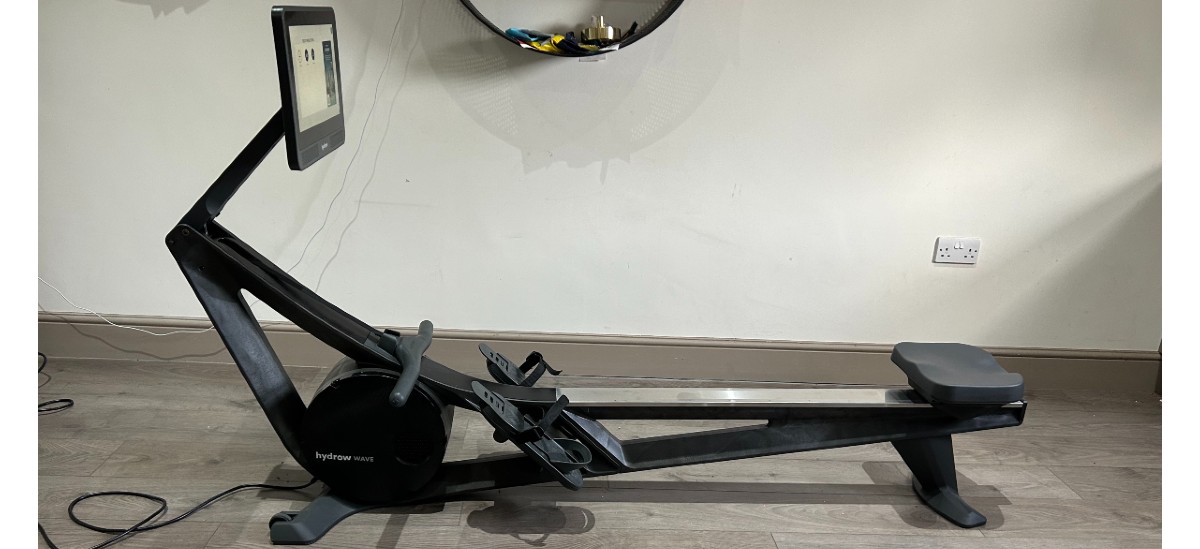Our Verdict
The Wave is the second rowing machine from Hydrow and it takes the same enjoyable rowing experience of the original, which has appeal for both beginner and more experienced indoor rowers alike, and puts it into a smaller, more affordable design. What’s not to like?
For
- Much smaller than first Hydrow
- Polished, easy-to-use software
- Classes are varied and enjoyable
Against
- There are cheaper connected rowers available
- Lacks really tough levels of resistance
You can trust Coach
The original Hydrow was the closest you could get to a Peloton for rowing, and featured in Coach’s selection of the best rowing machines as the best connected rower. It combined a high-grade design with engaging workouts for an enjoyable experience that was worth the money.
Since then, Peloton has revealed it will enter the indoor rower space and while we can’t say for definite the Hydrow Wave is a response to a Peloton rower, it certainly does feel like that.
The Hydrow Wave is 30% smaller and significantly cheaper than the original, but streams the same live and on-demand rowing workouts and training plans through the accompanying subscription service.
Hydrow Wave Review: Price And Availability
The Hydrow Wave was released in the US on 8th July 2022 and costs $1,495. It was then released in the UK on 8th September at £1,395. The original Hydrow is sticking around and is priced at $2,495/£1,995, making the Wave $1,000/£600 cheaper. You do still need to pay for the subscription service to access the platform, which currently sits at $39/£38 a month.
Other smart rowers include the Echelon Smart Rower ($999/£749) but it doesn’t include a built-in screen and also requires a monthly subscription of $34.99/£39.99. There’s also the NordicTrack RW900 rower for $1,799/£1,999, which has an integrated touchscreen display and links to the iFit app which is priced at a mere $15/£10 a month.
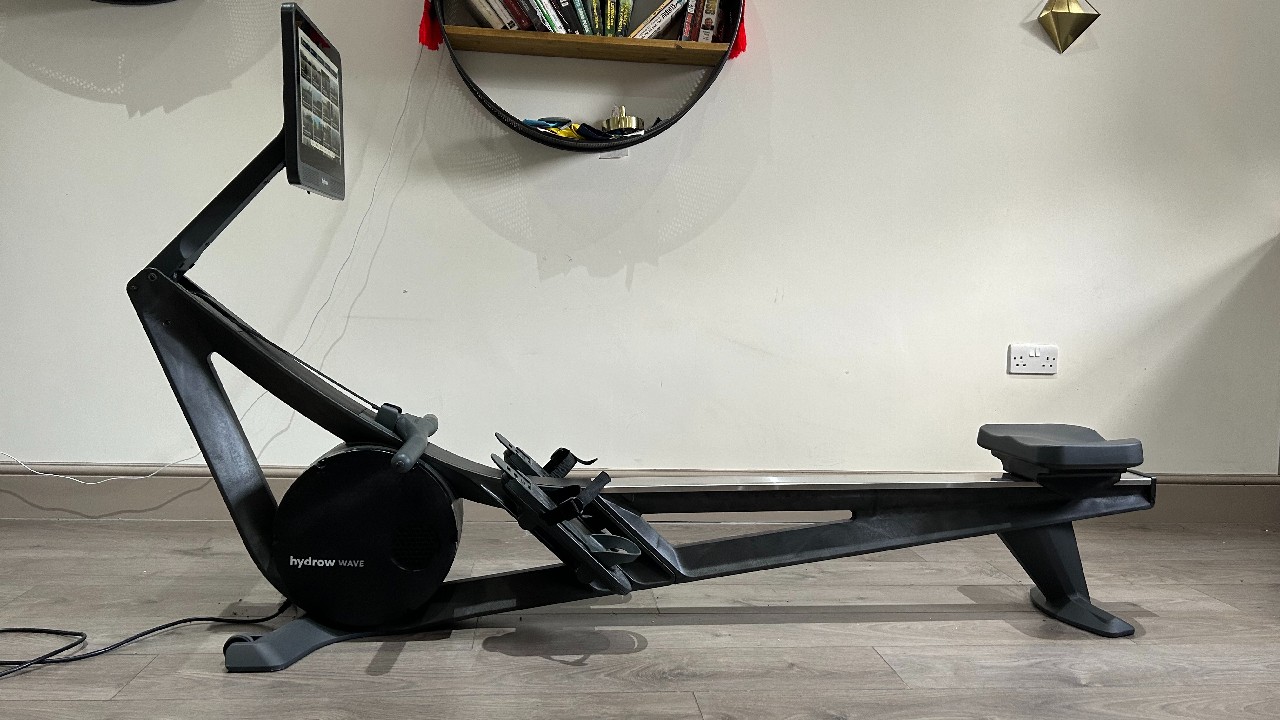
The Set-Up
While the original Hydrow was an attractive addition to your home, it was big and really only made sense if you had an entire room or at least a large part of a room to dedicate to it. While the box the Wave comes in is still big, what lies inside is much more manageable.
The Wave is 80in long, 19in wide and 47in high (203cm x 48cm x 109cm). The first Hydrow was 6in longer and another 6in wider, and the Wave is noticeably better suited to smaller spaces.
Sign up for workout ideas, training advice, reviews of the latest gear and more.
My Wave was delivered to me out of the box, in three parts: the main frame, the monitor, and the seat and electronics, all of which was comfortably handled by a single delivery man, compared with the two who struggled to lug the original up the stairs to my apartment.
While it might not dominate a room like the first Hydrow, it’s still not small. I was fortunate to have space for it, but if you’re in cramped quarters, be aware that it takes up more room than an exercise bike or a cheaper rowing machine.
It weighs 46kg and there are wheels at the front to help you manoeuvre it around a room. You can lift the frame and store it upright if you buy the storage kit ($80/£70), which is essentially a hook allowing a strap to hold the rower in place.
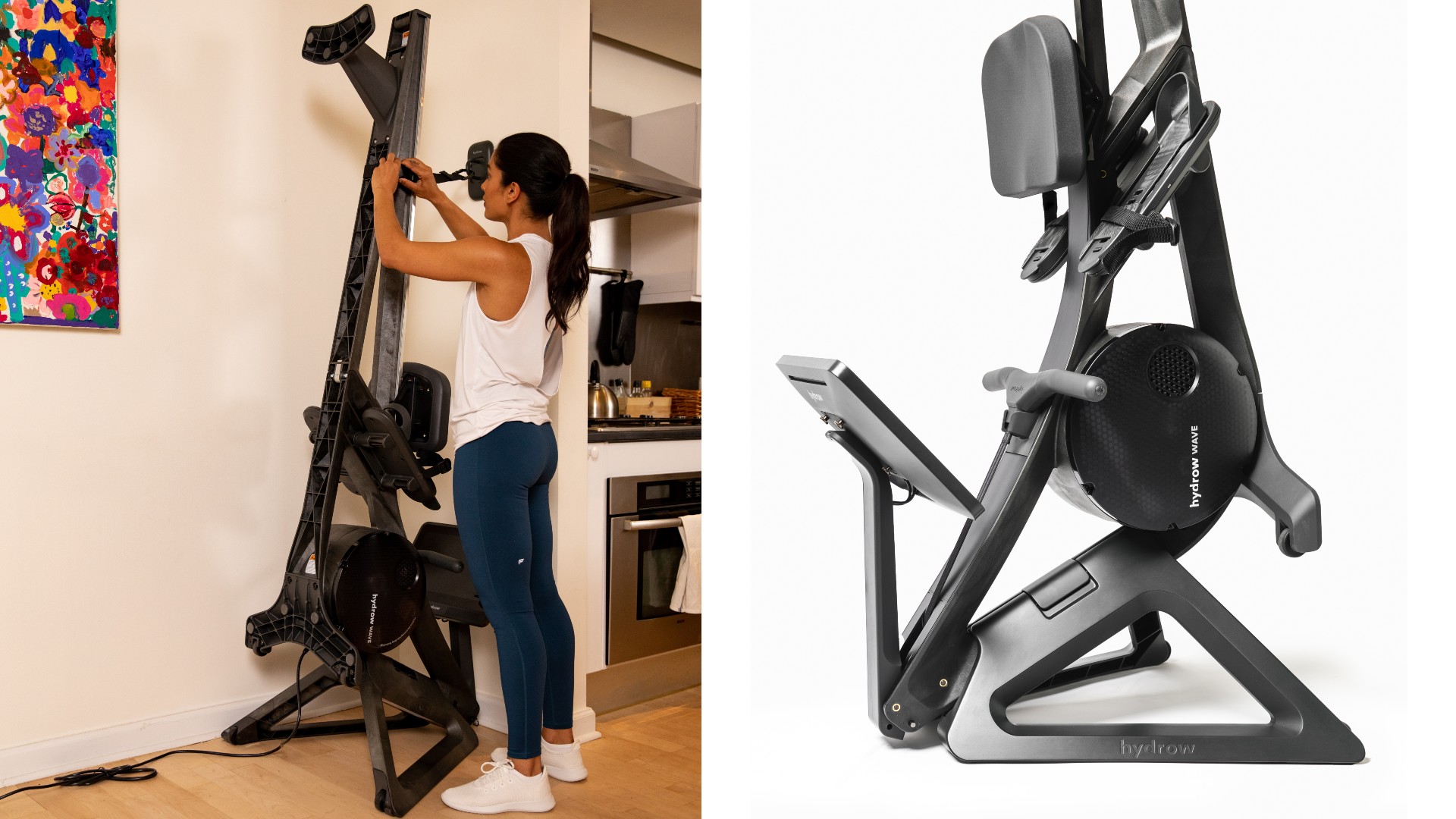
While the frame feels familiar, Hydrow has swapped aluminium and steel for a polycarbonate material to keep both the price and weight down. The change hasn’t damaged its looks at all and the max user weight is unchanged at 375lb (170kg).
As well as the smaller frame, the HD touchscreen has shrunk to 16in compared with the original’s 22in one. It does lose some of the immersive quality, but it’s still a great-quality display to view workouts on and interact with.
The Hydrow Wave needs to be plugged in and thankfully the cord is long enough that the machine doesn’t have to be placed in close quarters to a plug socket. The machine also requires a Wi-Fi connection to set up the software, but any updates are usually pretty quick.

How I Tested The Hydrow Wave
I followed the same testing approach as when I wrote my first Hydrow review, trying a mix of on-demand and live instructor-led classes, as well as the non-rowing, strength workouts. I covered more than 40km in 10 workouts over a couple of weeks, including some double session days.
I also have experience of using and reviewing other connected rowing machines, such as the Echelon Smart Rower and ProForm 750R, as well as a range of other models including some cheap options and those which use water or air resistance.

The Experience
Other than the smaller frame and screen, you get a virtually identical experience to the original machine. Like the first Hydrow, the Wave uses a computer-controlled resistance.
If you’re a first-timer, you’re greeted by an introductory video explaining the Hydrow story and then you’re into your home screen. Once you’ve put in some rowing time, that home screen will offer a recommended workout and also display your current rowing streak (Hydrow will also donate to the charity water.org for every 25 days you work out on the machine). You can swipe up on the pleasingly responsive touchscreen to see a range of training plans you can follow, including learning to row and programmes dedicated to runners.
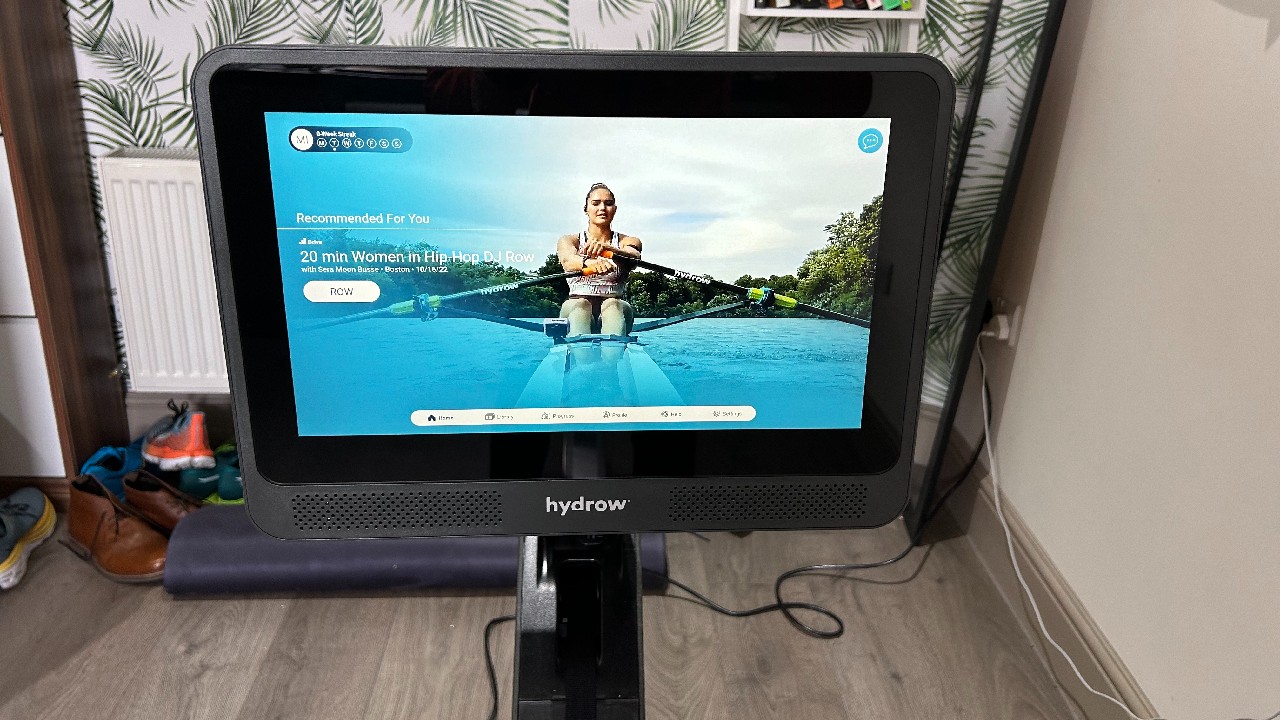
You’ll also find live rowing sessions, featured workouts and a list of the Hydrow instructors – the latter is especially useful if you start to gravitate to certain instructors’ styles, as I did.
You can also keep track of your weekly and monthly progress, see workout summaries and previous workouts completed, and take part in the challenges to secure prizes for hitting milestones. I want to say I wasn’t motivated to row long distances for a pair of Hydrow socks, but I found myself chasing targets for those socks.
There is a companion Hydrow phone app worth mentioning too. You can check your activity feeds and live class schedules, as well as connect to Strava to export your workouts automatically.
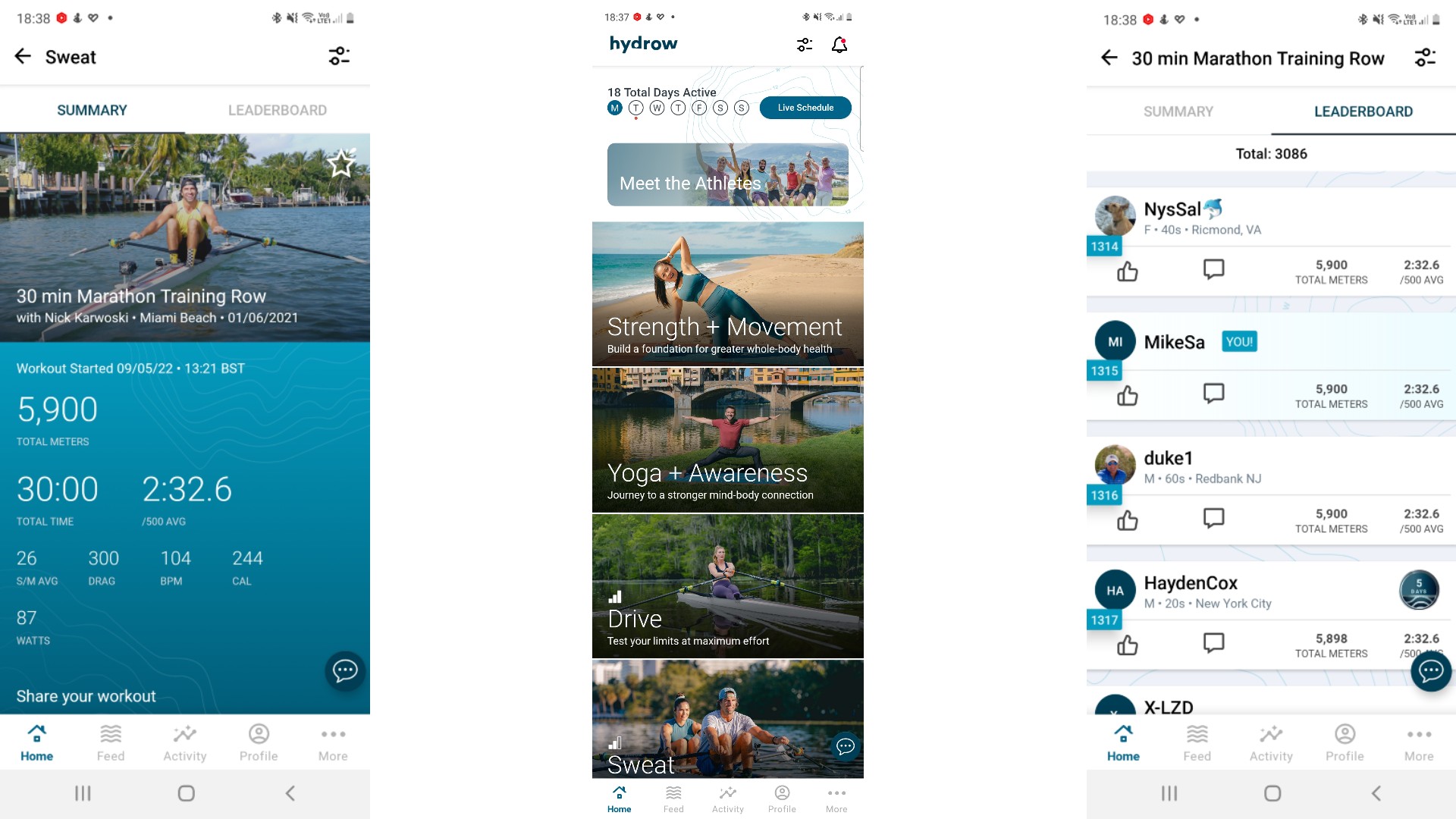
There are four types of sessions to choose from. There are on-demand or live classes led by instructors, which in my opinion are the best parts of the Hydrow experience. I really enjoyed the extra level of control you have over the audio. You can independently control the volume of both the music and the instructor’s voice, so you can choose to listen to long-winded stories that fill the time or drown it out with music. The speakers are of good quality and you can also pair Bluetooth headphones.
There’s also the free row option in Journeys mode, set in locations like Lake Tahoe or the Connecticut river without the instructor talking to you, although this is where I missed the larger screen on the original Hydrow. The vistas feel less immersive on a smaller screen.
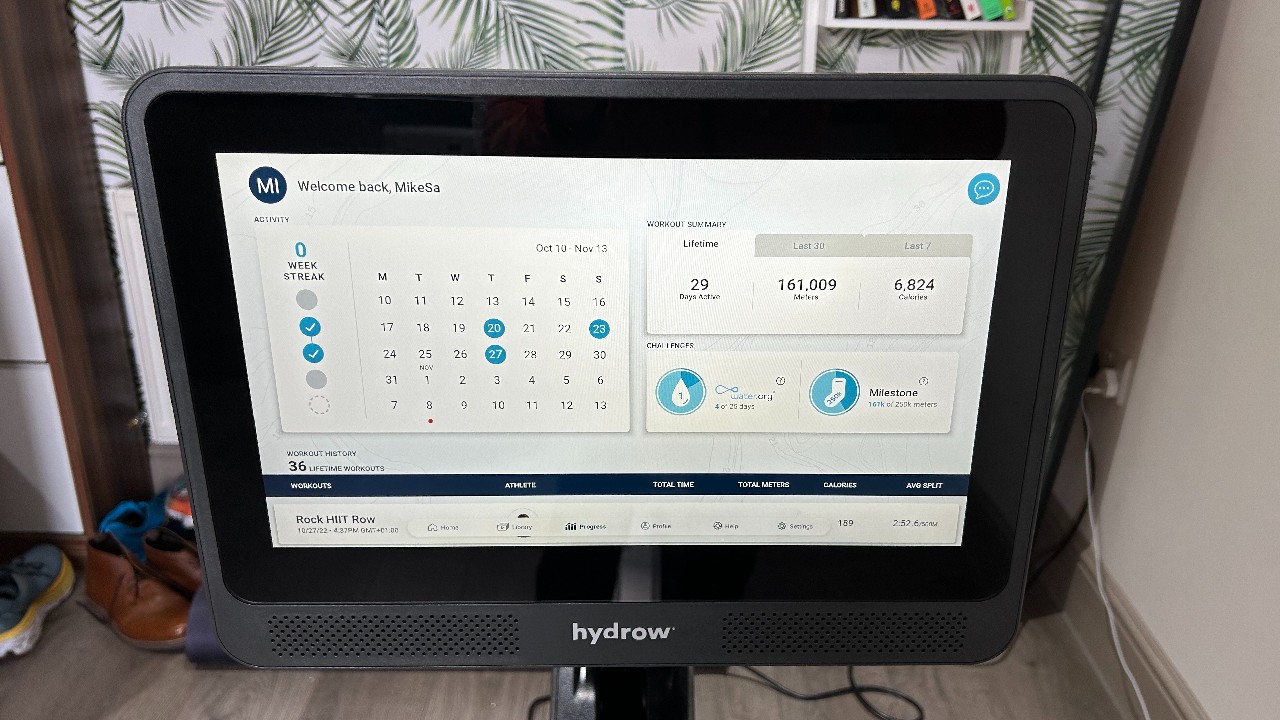
Finally there’s a racing mode, where you team up with other Hydrow owners to tackle target rowing distances or to row for a specific amount of time.
In each mode you’re shown the real-time rowing stats you’d expect: strokes per minute, average pace over 500 metres, total metres and calories burned. You can also display heart rate data if you have an external Bluetooth sensor. I had no problem pairing up a Garmin HRM Pro Plus chest strap and a Polar chest strap (if you’re in need of one, browse Coach’s recommendations of the best heart rate monitors). There’s also a leaderboard to show where your performance sits among other rowers and it’ll also predict how much distance you’ll cover based on your current effort.
The workouts can be short and sweet or you can go longer and there’s a good filter to find something to suit your mood. There’s enough variety to cater to a beginner who’s just looking to sweat as well as a more advanced exerciser who wants to build their endurance.

The rowing experience itself is impressive and not all that different from the first Hydrow. There’s a welcome range of resistance levels which caters to a mix of abilities, although I suspect some more seasoned indoor rowers might be hoping for a tougher maximum resistance setting. That said I found the resistance, which Hydrow says is designed to mimic rowing on the water, smooth and the workouts challenging. For reference, I’m a pretty fit person who rows a few times a week, and runs and swims regularly. I still think it’s primarily aimed at people that are new to indoor rowing, but the workouts still satisfied me.
One misstep is that you have to use the touchscreen to adjust the resistance, breaking your stroke rhythm. As before, I’d like to see a control a little closer to the handle.
I definitely felt that the Hydrow Wave was a little quieter than the first machine. There’s still the noise of the seat moving on the rail, but it’s a gentle whirring and the resistance wasn’t horribly loud. I felt comfortable using it early in the morning and late at night.
The handle was easy enough to grip, although slightly different from that used on the pricier Hydrow. I did notice on a couple of occasions that the handle was a little rough against my fingers, but on the whole it was comfortable.
The footplates are very accommodating and the strap that keeps feet in place never budged or ever felt loose. The seat is comfortable too and that remained the case even after longer 45-minute sessions.

Is The Hydrow Wave Worth It?
Hydrow has taken the great indoor rowing experience it delivered with its first machine and packaged in a much more compact design.
Crucially, it hasn’t made any major sacrifices in the hardware and software that dramatically changes the user experience. The rower is still good for beginners, but those who could use the motivation of classes to keep them coming back to the rower will also benefit.
Even at the lower price it’s not cheap, and you can pay less for a connected rower, but Hydrow gets more things right than the competition. Until Peloton’s rower surfaces, this is the smart indoor rower and coaching platform to beat.
More Reviews Of Connected Rowing Machines

Mike is an experienced journalist, beginning his career in 2008, and is a keen runner and swimmer. As a contributor to Coach, he covers swimming and reviews rowing machines.
